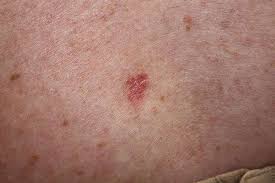Skin cancer is one of the most common types of cancer worldwide. Understanding the various types of skin cancer can empower individuals to recognize potential signs early and seek appropriate care. This article provides an overview of different skin cancer types, their characteristics, and key information to help you stay informed.
Understanding Basal Cell Carcinoma (BCC)
Basal cell carcinoma (BCC) is the most common form of skin cancer. It develops in the basal cells, which are found in the deepest layer of the epidermis, the outermost layer of your skin. BCC often appears on areas of the skin exposed to sunlight, such as the face, neck, and arms. It might look like a pearly white bump, a flat, scaly patch, or a sore that doesn’t heal. Although BCC grows slowly and is unlikely to spread to other parts of the body, early detection and treatment are essential to prevent long-term damage to the affected skin.
An Overview of Squamous Cell Carcinoma (SCC)
Squamous cell carcinoma (SCC) is another common type of cancer. It originates in the squamous cells, which make up the middle and outer layers of the skin. For those who regularly spend time outdoors, wearing protective clothing and sunscreen can play a role in reducing the risk of SCC.
SCC typically develops in sun-exposed areas, such as the scalp, hands, lips, and ears. It may appear as a red, scaly patch, a raised growth with a crusted surface, or an open sore that doesn’t heal. Unlike BCC, SCC has a higher likelihood of spreading to other parts of the body. While it is still treatable when caught early, timely attention is key.
Melanoma and Why It Requires Close Attention
Melanoma is a less common but more aggressive type of skin cancer. It develops in melanocytes, the cells responsible for producing melanin, the pigment that gives skin its color.
Key features of melanoma include:
- Appearance: Irregular moles or new spots that are asymmetrical, have uneven borders, or show multiple colors.
- Growth: Spots that change in size, color, or shape over time.
- Location: While often appearing on sun-exposed areas, melanoma can develop anywhere on the body, including areas like the soles of the feet or under the nails.
- Sensation: Moles or spots that itch, bleed, or become tender may be warning signs.
Melanoma is more likely to spread to nearby tissue and other parts of the body. Regular skin checks and paying attention to moles or spots that look unusual are essential steps in detecting melanoma early. If you’re unsure how to monitor changes in your skin, consulting a dermatologist can provide clarity and guidance.
Takeaway: Stay Proactive About Skin Cancer
While skin cancer can affect anyone, being informed about the different types can help individuals recognize potential concerns and address them promptly. By protecting your skin from excessive sun exposure, regularly examining your skin for changes, and seeking professional advice when necessary, you can take proactive steps to support your overall skin health. If you’re unsure about any changes in your skin, schedule a visit with a dermatologist for a professional evaluation.
- What Is Medicaid Exclusion For Funeral Plans – Benefits of Medicaid Funeral Exclusions!
- Banner Desert Medical Center – Trusted Care in Arizona!
- Why Cranberry Femine Health – The Ultimate Natural Wellness Guide for Women!
- What Is The Best Peptide For Bone Health – A Comprehensive Overview!
- Why Is Signify Health Calling Me – Understanding the Purpose Behind the Call!

Leave a Reply